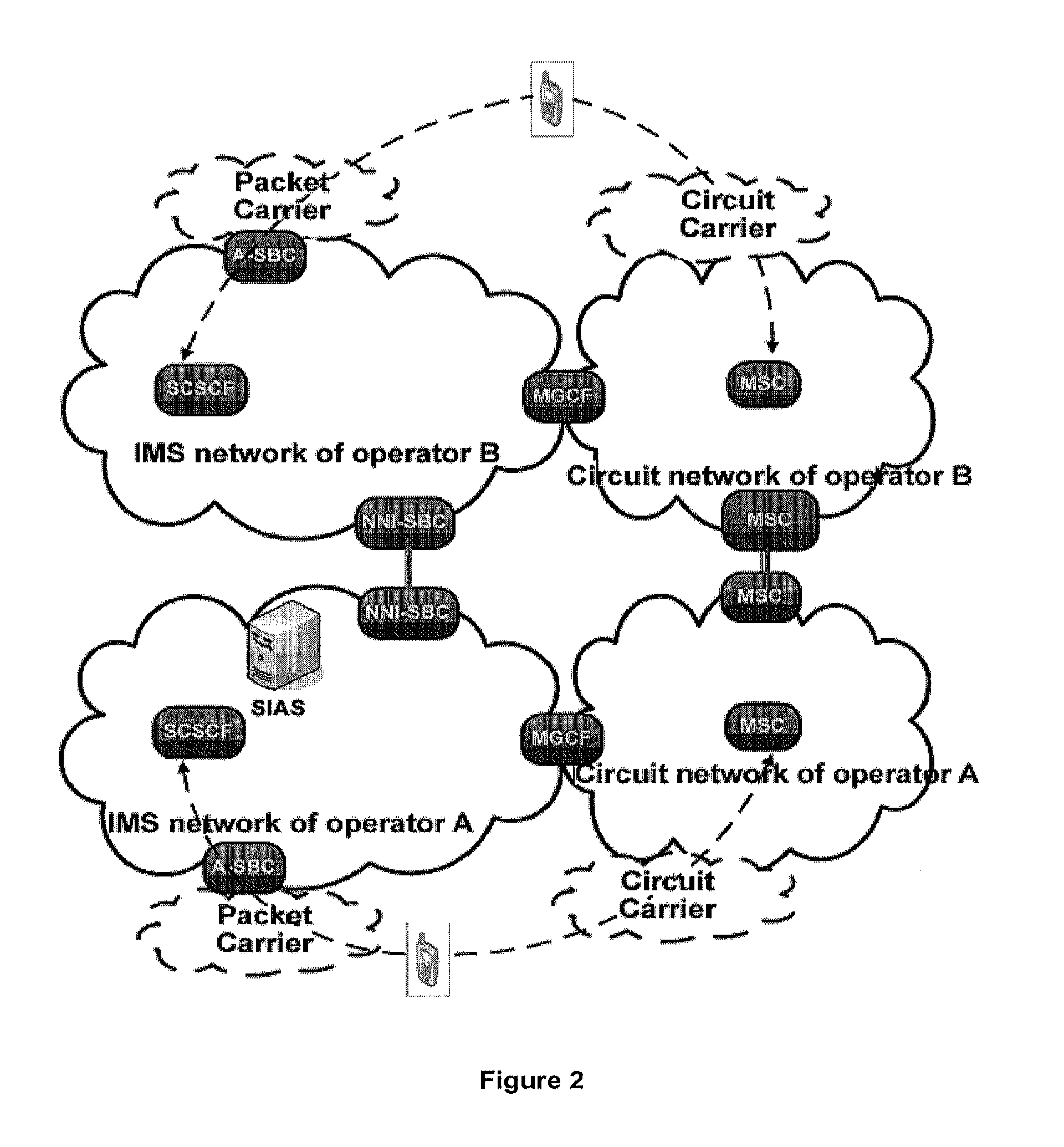Method and system for the improvement of routing in communications networks providing multimedia services over IMS networks
a technology of routing and communications network, applied in the field of multimedia communication, can solve the problems of not being able to control not having reliable control over the quality of service, and aggravating problems
- Summary
- Abstract
- Description
- Claims
- Application Information
AI Technical Summary
Benefits of technology
Problems solved by technology
Method used
Image
Examples
Embodiment Construction
[0060]The present invention proposes a “customized” treatment for each service and / or user in an IMS network which allows solving the aforementioned problems.
[0061]Currently, every time there is a larger number of users who are registered in the IMS network of their mobile operator, to access the advanced multimedia services offered by these networks (regardless of the fact that they are at the same time registered in other networks such as conventional circuit-switched networks), when communication is set up, when the operator detects that one of these users is a registered IMS user. The communication will be passed to the IMS network and, therefore, the quality of service will not be assured (because, as mentioned, since current IMS networks are not deployed on LTE mobile networks, they do not always assure the desired quality of service).
[0062]In other words, packet networks still coexist in mobile operators with circuit-switched networks (2G, 3G) on which there is assured qualit...
PUM
 Login to View More
Login to View More Abstract
Description
Claims
Application Information
 Login to View More
Login to View More - R&D
- Intellectual Property
- Life Sciences
- Materials
- Tech Scout
- Unparalleled Data Quality
- Higher Quality Content
- 60% Fewer Hallucinations
Browse by: Latest US Patents, China's latest patents, Technical Efficacy Thesaurus, Application Domain, Technology Topic, Popular Technical Reports.
© 2025 PatSnap. All rights reserved.Legal|Privacy policy|Modern Slavery Act Transparency Statement|Sitemap|About US| Contact US: help@patsnap.com



